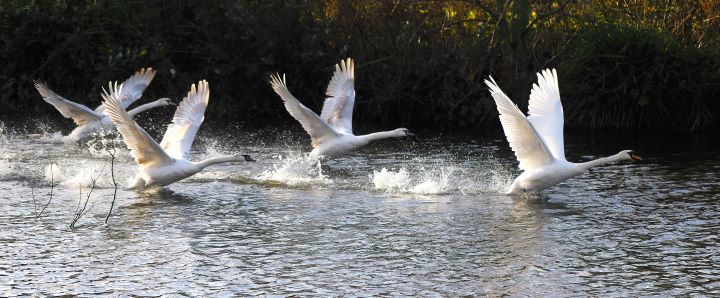Fall is the season that cygnets (young swans) learn to fly. With their feathers fully grown, they prepare by stretching their wings and flapping to build up the muscles they need to get airborne.
The parents’ moults (which is when they lose and regrow their feathers) will be complete so they are able to fly again and give the lessons. Typically, they gather the cygnets in one area of water, with one parent in front and one in back, facing the wind. Because swans are heavy birds, they need a good stretch of water to take off and the start of their flights look like splashy running until they get lift off and tuck their legs behind them. In the early attempts, most cygnets do their best to follow their parents but very often a few can’t quite do it and are left flapping vigorously in place. With time and practice they get the hang of it. They get higher in the air. They start to calibrate their landings better, which they often overshoot initially. Their flights also become longer as they build their endurance.
As fun as it is watching cygnets learn to fly, it is also poignant because it signals that their time in their parents’ territory is coming to an end. Their parents start nest-building for their next brood around March and they need the last brood to be on their way before that. If the cygnets don’t get the urge to strike out on their own their parents will insist on it, especially the father (the cob) who will chase them out in winter if they haven’t left yet.
Flight is obviously a critical skill for birds and one of their defenses, but especially for youngsters without much experience, it also has some dangers. Because swans’ eyes are on the sides of their heads, they don’t see especially well in front of them and so they can hit obstacles like wires and poles. They can also misjudge geographic features. With snow in winter a dark road can look like open water, for instance. Cygnet mortality is highest in the first two weeks of their lives because they are most vulnerable, but fledging, (flying away from their parents) is the second riskiest time.
Still, fly away they must. Their parents will soon have taught them all they can about life as a grown up swan. It’s time for the cygnets to spread their wings.

